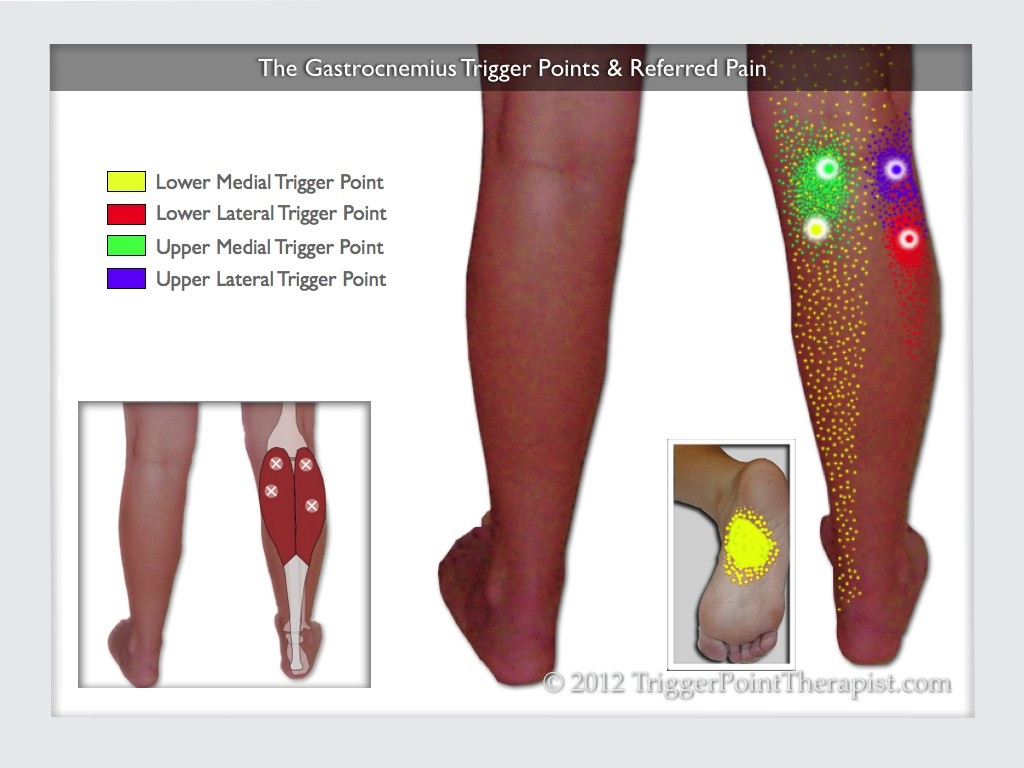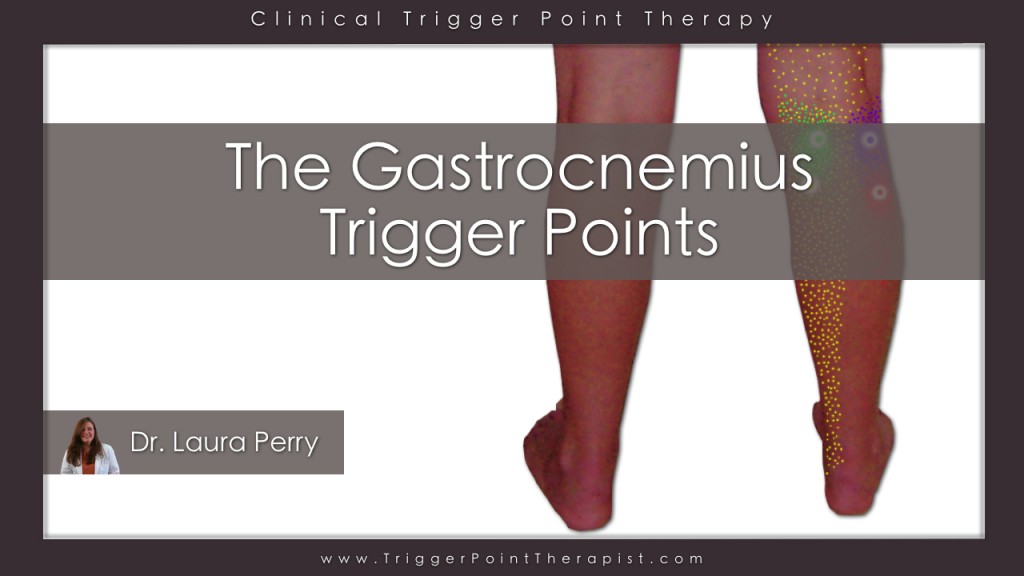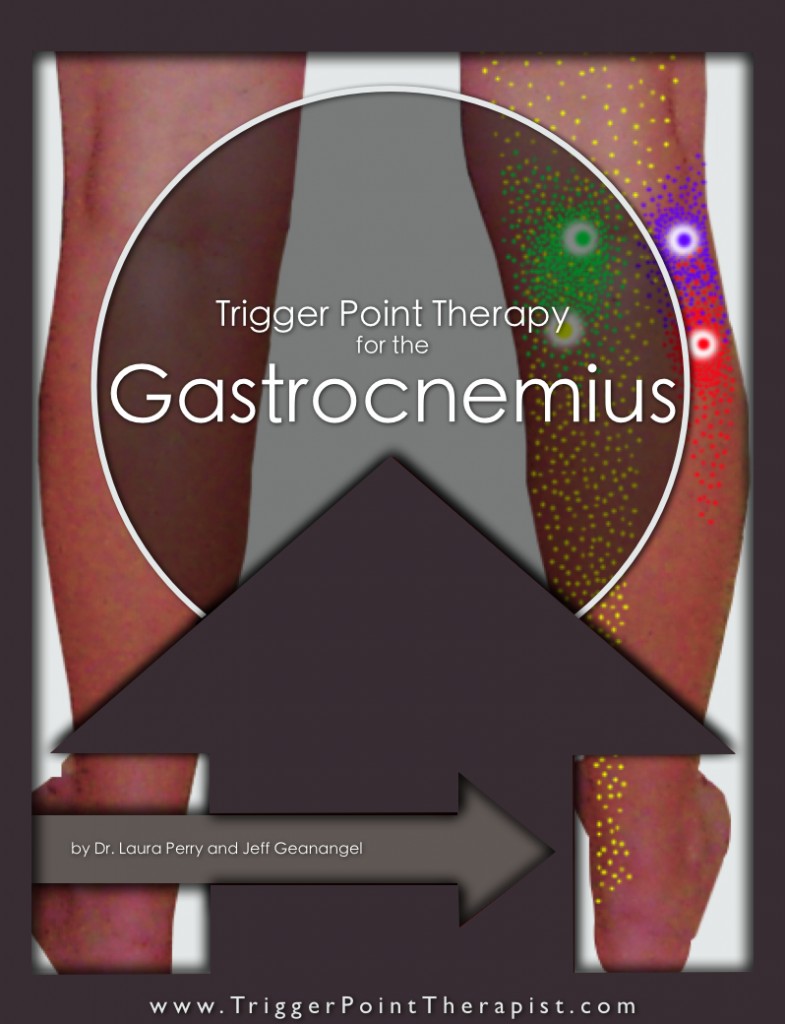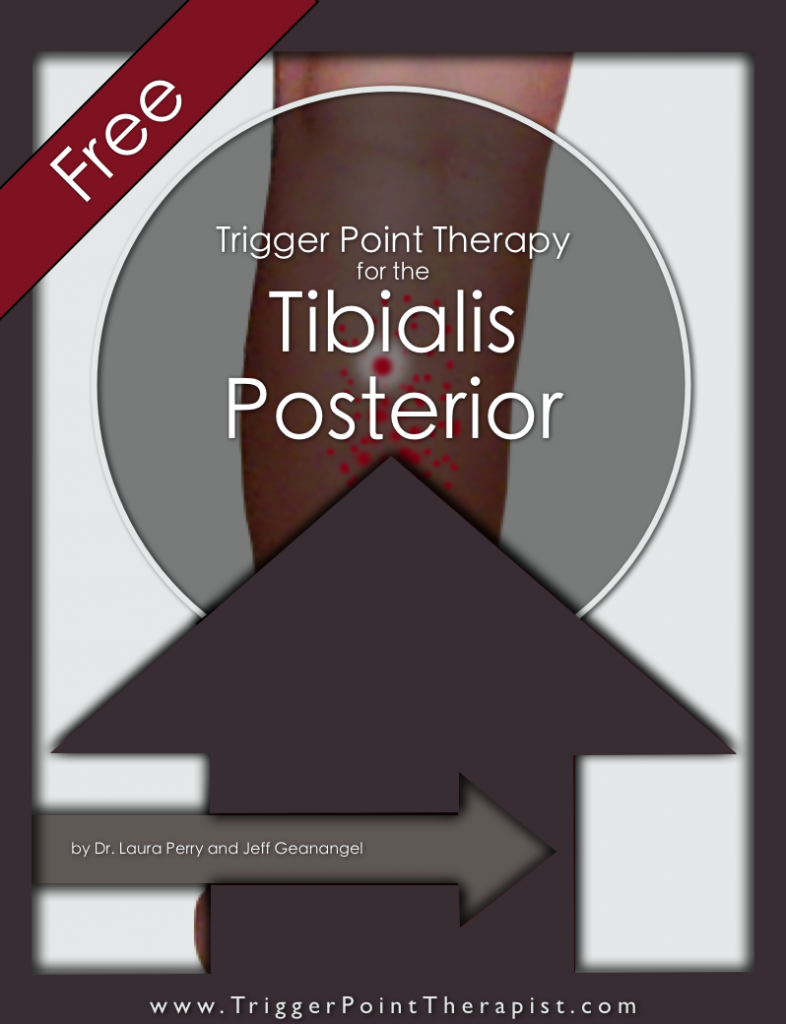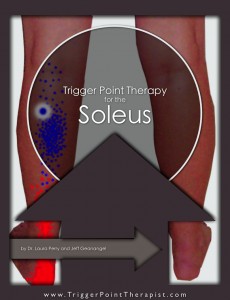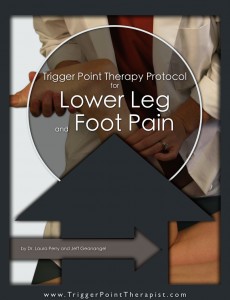I love working the gastrocnemius trigger points. No other muscle seems to have as much “bang-for the-buck” for both the therapist and the client (but the soleus muscle is a close second). Call me crazy, but sometimes I think every case of myofascial pain (from headaches to foot pain) has it’s origin in the calf muscles. Of course I have found no medical science to support that claim, but when it comes to the peculiarities of the nervous system, who really knows?
What is unique about these trigger points is that they don’t have to be actively producing pain to cause big problems. Latent trigger points in this muscle are frequently responsible for seriously painful calf cramps. When these trigger points are active, they refer pain to the back of knee, calf, and instep of the foot regions.
Learning how to release these trigger points, and the muscle tension that they create, is a powerful tool for the trigger point therapist.
The Gastrocnemius Muscle
The gastrocnemius is the largest of the calf muscles, and “largely” contributes to the shape of the calf region on the back of the lower leg. It is the most superficial of the calf muscles, with the soleus and tibialis posterior muscles lying deep to it.
Contrary to popular belief, the gastrocnemius contributes very little to the push-off force used to propel the body forward during walking and running. It is more often used in an eccentric manner (a contraction that slows the mechanical stretching of a muscle) to control the forward momentum of the body during ambulation, and to stabilize both the knee and ankle joints during ambulation.
This muscle may also assist the soleus muscle in providing the extra push-off force necessary to jump, walk uphill, walk up or down stairs, and to bicycle.
Muscle Attachments: Both heads of the gastrocnemius attach superiorly to the medial and lateral condyles of femur and extend downward, across the back of the knee joint, to attach to the calcaneus via the Achilles tendon. The skeletal landmarks and muscular attachments of this muscle are shown in the video excerpt linked to at the end of this article .
Muscle Actions: Contraction of the gastrocnemius primarily produces plantar flexion of the foot, though it may also supinate the foot and assist with flexion of the knee.
The Gastrocnemius Trigger Points
As shown in the diagram below, the gastrocnemius may contain up to four trigger points.
- The two medial trigger points lie in the medial head of the gastrocnemius, with the upper trigger point found just below the crease of the knee, and the lower trigger point an inch or two below it.
- The two lateral trigger points in the lateral head mirror the positioning of the medial trigger points, except that they lie slightly more distal (towards the foot) by about a half-inch.
Gastrocnemius Muscle Pain
The diagram above also shows the referred pain patterns associated with the gastrocnemius trigger points.
- The lower medial trigger point is the only gastrocnemius trigger point that has an extended pain referral pattern. Its pain tends to cover the whole of the calf region and will concentrate strongly in the instep region of the foot. It may also extend upward into the back of the thigh.
- The lower lateral trigger point refers pain locally to the outside region of the calf.
- The upper medial and upper lateral trigger points refer pain locally to the back of the knee.
What Causes Gastrocnemius Trigger Points?
The following events or activities may activate or reactivate these calf trigger points:
- Chilling of the muscle, especially if it is fatigued or in a shortened state.
- Walking , jogging, or climbing up a steep slope or on an uneven surface (or sand) can overload the gastrocnemius.
- Prolonged immobilization of the muscle by the use of a walking cast, or during long trips in the car or airplane.
- Sitting in a recliner (or using an ottoman) that doesn’t have support for the heels (feet hang off), causes the weight of the leg to compress the calf region and keeps the gastrocnemius in a shortened position.
- Tight fitting socks or garters can impede blood flow in the calf and directly
- Wearing high heels keeps the gastrocnemius in a shortened position while walking.
- Sleeping on the back or stomach with the feet planter flexed (toes pointed) is a frequent cause of these trigger points (and calf cramps) especially if the muscle is chilled by a fan overnight.
- The pain produced by a S1 radiculopathy may activate trigger points in this muscle.
- Vitamin E deficiency may contribute to reoccurring calf cramps.
Gastrocnemius Symptoms & Disorders
Clients with active gastrocnemius trigger points will present with any or all of the following symptoms or clinical findings:
- Calf cramps, typically at night (these may be present also with latent gastrocnemius trigger points).
- Pain on the back of the knee while walking up stairs or up a slope.
- Pain in the instep region of the foot.
- Clients may walk flat-footed and not be able to walk fast without pain. The may also be unable to straighten the leg (at the knee) while standing if they are asked to keep their heel on the floor.
- Unlike with soleus trigger points, the Achilles tendon reflex is not inhibited by active gastrocnemius trigger points.
Related Disorders
- Nocturnal Calf Cramps: Trigger points in the gastrocnemius muscle may not be the sole cause of calf cramps at night. Dehydration (from vomiting or diarrhea) and several mineral deficiencies, such a calcium or magnesium, may also cause this disorder. Other factors that may contribute to this disorder include diabetes, lumbar nerve compression (radiculopathy), hemodialysis, Parkinson’s disease, and side-effects from drugs (such as lithium, cimetidine, and phenothiazines).
- S1 Radiculopathy: The pain associated with compression of the S1 nerve, namely posterior thigh and calf pain, may be mimicked by the posterior knee and calf pain produced by the gastrocnemius trigger points. Additionally, the S1 radiculopathy pain may actually cause trigger point activity in this muscle (and other muscles) which might persist after the radiculopathy (or any lumbar radiculopathy) has been surgically decompressed (also known as post-laminectomy pain).
- Tennis Leg: This condition is a partial tearing of the medial head of the gastrocnemius muscle that occasionally occurs in tennis players as they serve the ball. It results in a sudden intense pain in the calf region followed by swelling.
- Thrombophlebitis: The calf pain associated with deep vein thrombosis can be very similar to that produced by active gastrocnemius (and soleus) trigger points, though other symptoms (such as redness of the skin in the lower leg) are not produced by trigger point activity. This condition must be diagnosed with a contrast venography study.
- Posterior Compartment Syndrome: A serious condition of the calf region marked by diffuse pain and swelling. This condition often occurs after a undiagnosed tear of the muscle and must be treated immediately to prevent serious complications.
- Intermittent Claudication: This is a disease that causes cramping in the calf and is thought to be caused by an obstruction in the arteries that prevents proper blood flow to the muscles of the calf. Trigger point activity in the gastrocnemius and soleus muscles can be a mediator of the calf pain and cramping associated with this condition. The impaired blood flow is thought to activate the trigger points in these muscles.
Calf Trigger Points and Stress
In my experience, trigger points in this muscle group can have far reaching effects on a person. If a client comes to me in a really stressed-out state, the first thing I do is work the calf trigger points (gastrocnemius and soleus muscles). Once their calf muscles are relaxed, their whole body becomes more relaxed and their breathing becomes slower and deeper. This makes it much easier for me to work on them, especially if it’s their first time to experience trigger point therapy.
I can find no scientific or clinical reason why releasing these (often latent) calf trigger points should have such a profound systemic effect on the body, but trust me it’s real. People have no idea how much tension they carry in their calf muscles until you release it.
Treatment of Gastrocnemius Trigger Points
More information about these trigger points, as well as complete step-by-step instructions for locating and releasing them, can be found in the Trigger Point Therapy for Gastrocnemius Video + 17-Page PDF Booklet.
Click on the image below to watch an excerpt from the Gastrocnemius Trigger Points video.
Related Articles:
- Soleus Trigger Points and Runner’s Heel Pain
- The Peroneal Trigger Points: An Overlooked Source of Ankle Pain
Related Instructional Videos:
